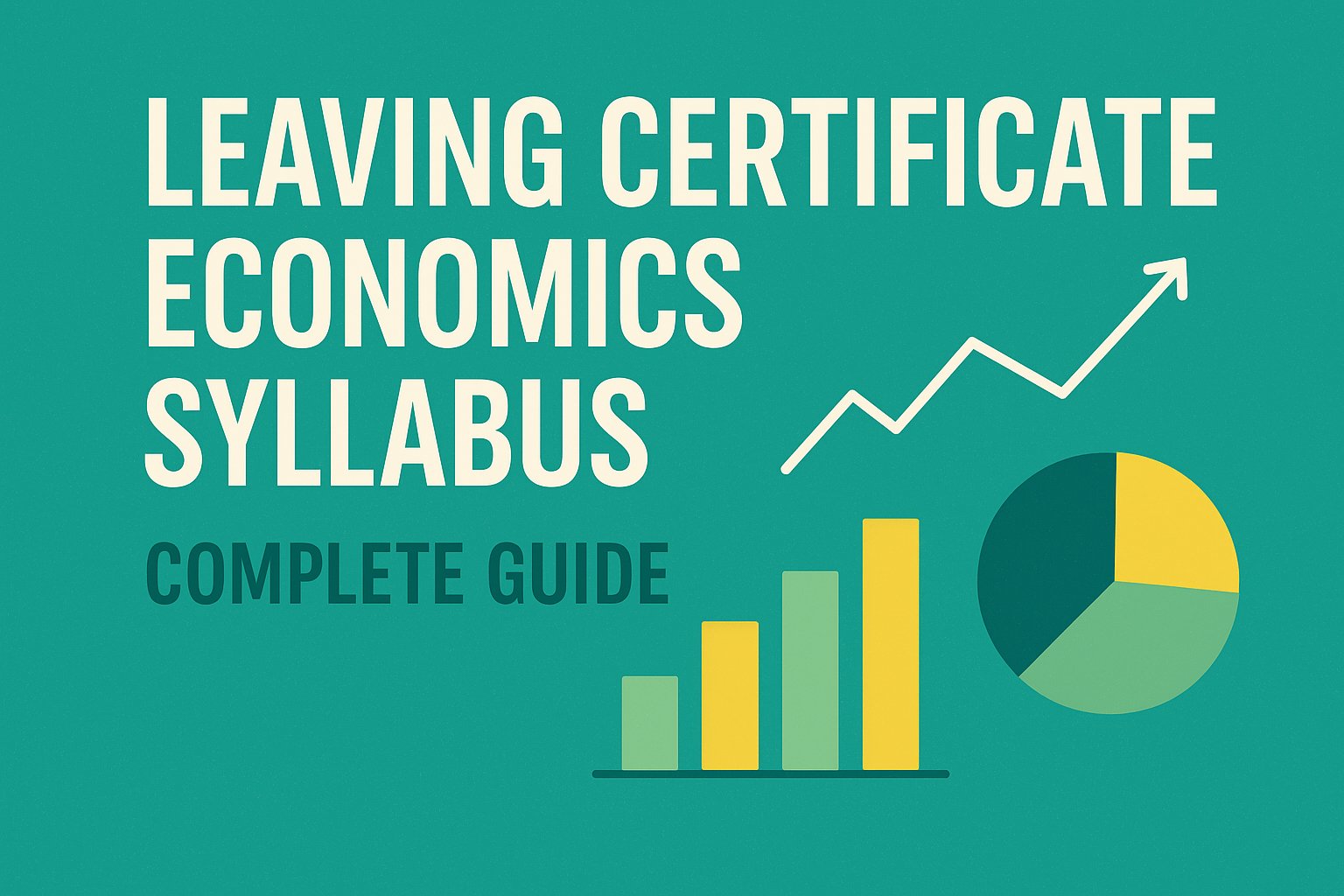Discover valuable insights that have successfully guided more than 25 students to attain the coveted H1 Grade in Leaving Cert Economics examinations. While reading this blog may take only 10 minutes, it has the potential to spare you weeks or even months of misguided study strategies.
Tips H1 Grade in Leaving Cert Economics
- Read from Curriculum
In my teaching journey, I’ve noticed something cool: students who use their class books do well in tests and exams. The secret sauce? They’re awesome at grasping the big ideas and remembering them. We offer handy mind maps and notes to help you remember stuff, but the real magic happens when you mix them in with your textbook.If you’re gearing up for the leaving certificate economics exams, Positive Economics and Economics Now are your go-to books. Trust me, they’re not just syllabus superheroes; they make learning economics way more fun and help you score those awesome grades. Read and practice from curriculum to achieve a H1 Grade in Leaving Cert Economics - Scribble notes during the economics grind
Quick tip for acing your economics grinds: Take notes while you’re in class! It’s like a double win. First, it helps you understand what’s going on. Second, those notes become your secret weapon for speedy revision later on. Imagine this: I kick off my economic session with a universally true statement like ‘Limited Resources, but Unlimited Wants.’Writing that down and using it for post-class revision is like a memory boost for the long haul. Plus, it’s a shortcut to diving back into your textbooks when you need a refresher. Grabbing the pen and jotting down those nuggets of wisdom would be truly magical for attaining an H1 Grade in Leaving Cert Economics Exam.
- Avoiding unnecessary hoping between Micro and Macro
The economics curriculum typically segregates into Microeconomics and Macroeconomics. In terms of Positive Economics, Chapters 1-10 delve into Microeconomics, while 11-18 pertain to Macroeconomics. I believe that students should refrain from jumping between these sections merely to prepare for weekly tests.A structured approach is advisable, commencing with a focus on Microeconomics and progressing sequentially to Macroeconomics. This sequential study method ensures a comprehensive understanding of both facets, enhancing the student’s grasp of economic principles and facilitating a more effective learning experience.
- Revise immediately upon finishing the section
In my opinion, it’s super smart to conquer Microeconomics before diving into Macroeconomics! Imagine it like leveling up in a video game – you want to master one level before moving on to the next. So, my tip is to ace the Microeconomics section first, give it your all, and then charge into the world of Macroeconomics.It’s like building a strong foundation for your econ knowledge. Trust me, this strategy not only helps you nail the first part of economics but also makes those concepts stick around for the long haul. It’s like creating a solid base before conquering the whole economic adventure!
- Please attempt the end-of-the-chapter questions
In my experience, I’ve noticed some friends skipping the end-of-chapter questions after reading through a lesson. It might seem like a time-saver, but it’s a bad move. It is because those questions are like practice rounds for the real game to get an H1 Grade in Leaving Cert Economics exams! Just reading won’t cut it; you’ve got to tackle those questions to get the hang of applying what you’ve learned.It’s like training for a video game boss battle – you need the practice to level up your skills. So, don’t miss out on this crucial step! Answer those end-of-chapter questions, and you’ll not only understand the stuff better but also rock your exams like a pro!
- Utilize past year examination papers
Studyclix for past year exam papers stands as an invaluable asset for Leaving Certificate students, offering a trove of past examination papers to function as comprehensive mock assessments. The Leaving Certificate examinations diverge significantly from typical chapter examples and end-of-year questions, emphasizing situational scenarios connected to real-life situations and events. Leveraging the wealth of previous year exams from Studyclix serves as an effective strategy to not only test one’s understanding but also enhance it.This resource proves to be both practical and economical, with a cost of less than 50 quid. In essence, Studyclix emerges as a user-friendly and budget-conscious solution for students navigating to get an H1 Grade in Leaving Cert Economics. It provides a tailored platform for honing skills and mastering the unique challenges posed by these examinations.
- Delve into the theoretical concepts and integrate them with real-world examples
For leaving certificate students, I recommend that all my tutoring students broaden their reading beyond the economics textbook. This practice helps establish connections between theoretical concepts and real-world applications.For instance, I’ve observed exam questions about Ireland’s property crisis, and students who solely memorized the textbook had difficulty addressing such inquiries. Therefore, incorporating both micro and macroeconomics with real-life events enhances your proficiency as an exam-taker.
- Finish your economics project promptly and have it reviewed by our leading tutors
In 2023, we assisted over 20 students in achieving impeccable grades for their economics projects. Crafting successful economic projects demands rigorous research and concentration.Our approach diverges from conventional tutoring, focusing instead on dedicated classes and sessions for research methodology and articulation. You can elevate your research project by booking a session with us and enhance your skills in conducting thorough and well-phrased research. Economics Research Project consist of 20% and scoring perfect score on it improves your chances for getting a H1 Grade in Leaving Cert Economics.
- Aim to incorporate the project with relevant chapters from the book
Economics research projects present a level of complexity beyond initial expectations. Drawing from my prior experiences, I’ve noted that leaving cert students often employ casual language and overlook textbook content in their projects, resulting in a negative impact on their grades.To address this issue, it is essential for students to thoroughly engage with their textbooks and align their research with the covered topics. I strongly advise all undergraduate students, particularly those preparing for leaving certificate exams, to familiarize themselves with Macroeconomics before initiating their research projects.
These proactive approaches ensure a more comprehensive exploration of the subject matter so that you will get an H1 Grade in Leaving Cert Economics preparation.








